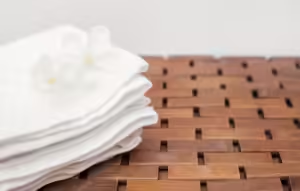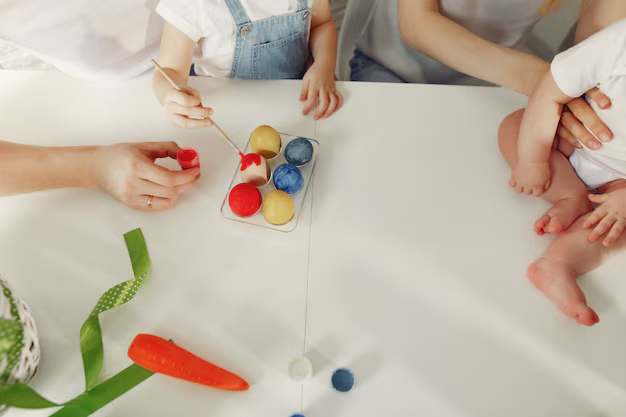Simple sensory activities for infants?
Infants learn and understand the world through sight, touch, hearing, taste, and smell. By doing sensory activities with your little one, you will be able to develop their early intellectual ability, enhance their cognitive skills, and help develop curiosity. These activities can also be used as a great time to develop bonding time with your baby. This guide reveals simple, efficient, and safe sensory activities that cater to your infant’s requirements.
Why Sensory Play is so Important for Babies?
Sensory play serves as a building block for your baby’s overall growth. Here’s why it’s essential:
Boosts Brain Development: Stimulating the senses encourages the formation of strong neural pathways.
Encourages Curiosity: Sensory activities help babies better understand their surroundings and their bodies.
Refines Motor Abilities: Engaging in touch-based play strengthens coordination and muscle control.Simple sensory activities for infants
Improves Language Skills: Exposure to different textures, sounds, and visuals supports early communication.
Strengthens Bonds: Interactive playing helps you bond deeper with your baby.
Baby activities for Visual Stimulation
During infancy, one of the important senses that develop is sight. Engage the visual learning process with these fun activities:
1. High Contrasting Bold Pattern Cards
How it Works: Have your infant track black-and-white or high-contrast cards with simple patterns that attract your baby’s gaze.Simple sensory activities for infants
Developmental Benefit: The patterns stimulate their visual focus and tracking development.
2. Playing with Reflection

How It Works: Place your baby in front of a baby-safe mirror.
Developmental Benefit: Mirrors assist babies in identifying faces and boosting visual acuity.Simple sensory activities for infants
3. Hanging Toys
How It Works: Suspend colorful toys over the crib or play mat.
Developmental Benefit: This activity encourages your baby to track movement and focus on items.
Tactile Activities to Engage Touch.Simple sensory activities for infants
Touch-based activities allow babies to investigate the texture of various materials, which enhances sensory awareness and motor skills.
4. Textured Mat or Board

How It Works: Prepare a mat or board with some assorted textured materials, like felt, fur, or bubble wrap.Simple sensory activities for infants
Developmental Value: This will allow the baby to explore various textures, hence strengthening tactile recognition.
5. Soft Balls Exploration
How It Works: Let your little one play around and hold squishy or rubbery balls.
Developmental Value: Strengthens hand strength along with grip control.Simple sensory activities for infants
6. Water Play

How It Works: Fill a shallow basin with warm water and allow your baby to touch or splash.
Developmental Benefit: Introduce them to the sensation of water and develop their motor skills.
Sound-Based Activities for Auditory Development
Expose your baby’s sense of hearing using activities that aid in recognizing sounds, rhythms, and patterns.Simple sensory activities for infants
7. Singing Melodies
How It Works: Sing nursery rhymes or lullabies, and change your tone and rhythm.
Developmental Value: Enhances their auditory skills in sound recognition and rhythms, thus soothing effect.Simple sensory activities for infants
8. Homemade Rattle Shakers

How To Make It: Fill a closed bottle with rice or little beads. Open the bottle and shake it gently.
Developmental Value: Develops the skill of recognition through hearing and provides a sense of causality.Simple sensory activities for infants
9. Calming Natural Sounds
How To Make It: Play audio recordings of birds, gentle rain, or waves in the ocean.
Developmental Value: Exposed to external sounds; will make him feel relaxed
Smell is one of those major senses that makes your little baby feel comforted and familiar.Simple sensory activities for infants
10. Scented Towels

How It Works: Drench a soft towel with lavender or chamomile, then allow your baby to sniff the towel under close observation.
Developmental Benefit: Introduces soothing smells, improving his olfactory awareness.
11. Discovering Natural Scents
How It Works: Allow your baby to smell fresh herbs such as mint or basil from a safe distance.
Developmental Benefit: Gives your baby a mild exposure to natural fragrances.
Taste-Based Sensory Activities
Taste develops as babies mature and can be gradually introduced in small, age-appropriate amounts.
12. Discovering Flavors through Food

How It Works: Present pureed fruits or vegetables when your baby starts with solid foods.
Developmental Benefit: Expands their taste bud repertoire and acclimates them to new flavors.
13. Safe Chew Toys
How It Works: Give them chilled teething rings to chew on.
Developmental Benefit: Helps soothe sore gums during teething as they use their sense of taste.
Activities to Engage Multiple Senses
Engaging multiple senses can make an activity interesting for your baby.
14. Magic Bubbles

How It Works: Blow bubbles and encourage your baby to observe, touch, or pop them.
Developmental Benefit: Stimulation of sight, touch, and motor functions.
15. Play Gyms with Interaction
How It Works: Create a baby gym with hanging toys, crinkly fabrics, and mirrors.
Developmental Benefit: Encourages movement, sensory exploration, and coordination 16. Glittery Sensory Bottles
How It Works:

Fill a bottle with glitter, water, or small objects for a mesmerizing sensory experience.
Developmental Benefit:
Combines visual stimulation with auditory stimulation when it is shaken.
Tips for Safe Sensory Play
Close Observation:
Ensure the presence of close observation on your baby at all times to avoid choking or accident occurrences.
Age-Based Selection:
Be guided by your baby’s developmental age while choosing an activity.
Use Baby-Friendly Materials: All elements must be non-toxic and devoid of small parts.
Take It Slow:

Avoid overwhelming your baby by focusing on one activity at a time.
Observe Reactions:
Watch your baby’s responses and adapt activities accordingly.
Frequently Asked Questions About Sensory Play
1. When can I introduce sensory activities to my baby?
You can start sensory activities from birth, focusing on simple ones like singing and visual tracking.
2. Are all sensory activities safe for newborns?
Yes, provided they are monitored and adapted to the baby’s age.
3. Can sensory play overstimulate a baby?
Absolutely! Too much stimulation might be an over-stimulating affair. Aim for short sessions and check for signs of overstimulation.
4. Do I need special equipment for sensory play?
Not necessarily! Everyday household items may give your baby fantastic sensory experiences.
5. How often should I engage my baby in sensory play?
It depends on your comfort level and your baby’s reaction.
Carry out short sensory activities a few times a day depending on your baby’s mood and energy levels.
6. Calming sensory activities for infants
Gentle singing, swaddling, or introducing soothing scents like lavender are great calming techniques for cranky babies.
